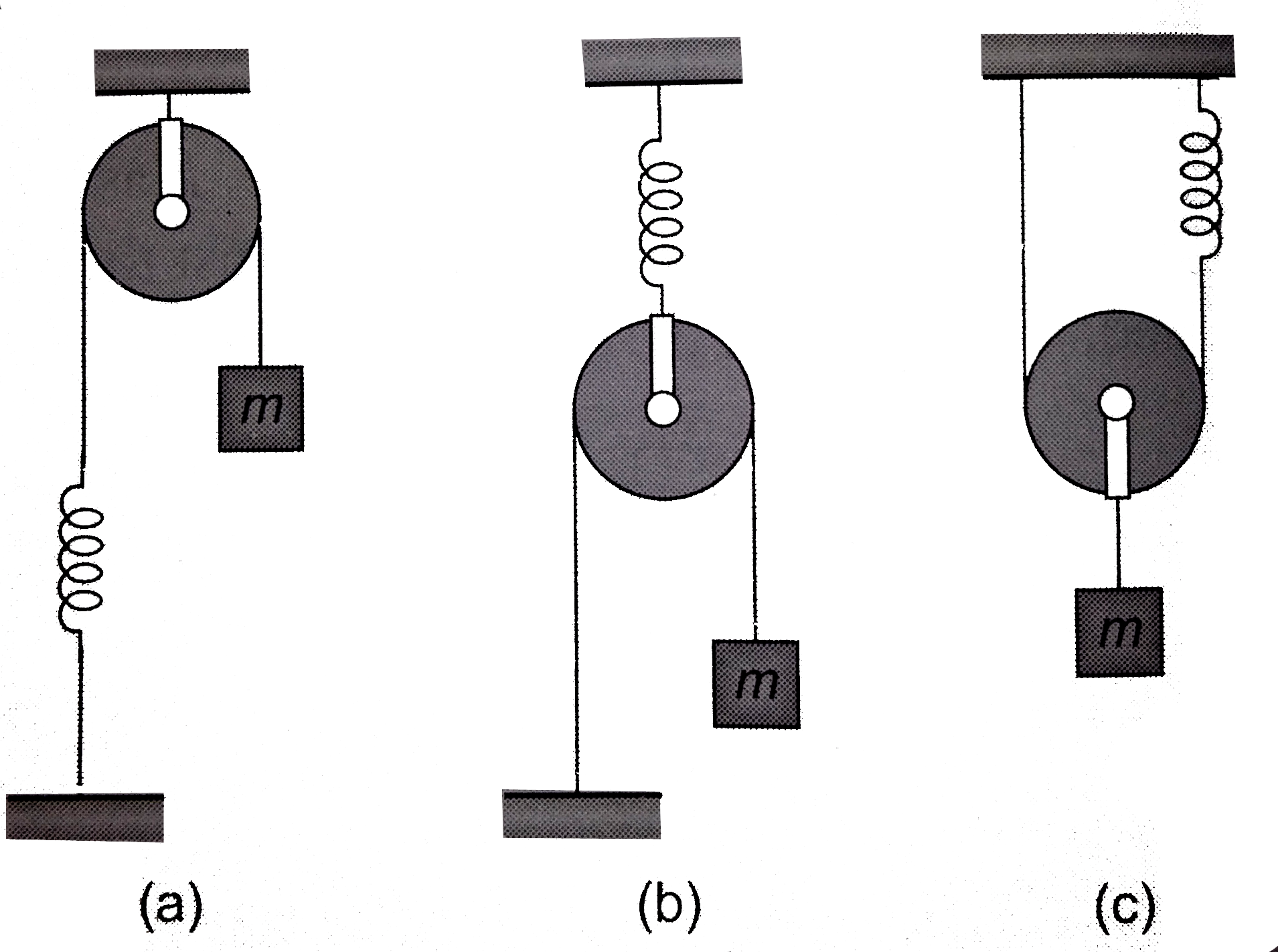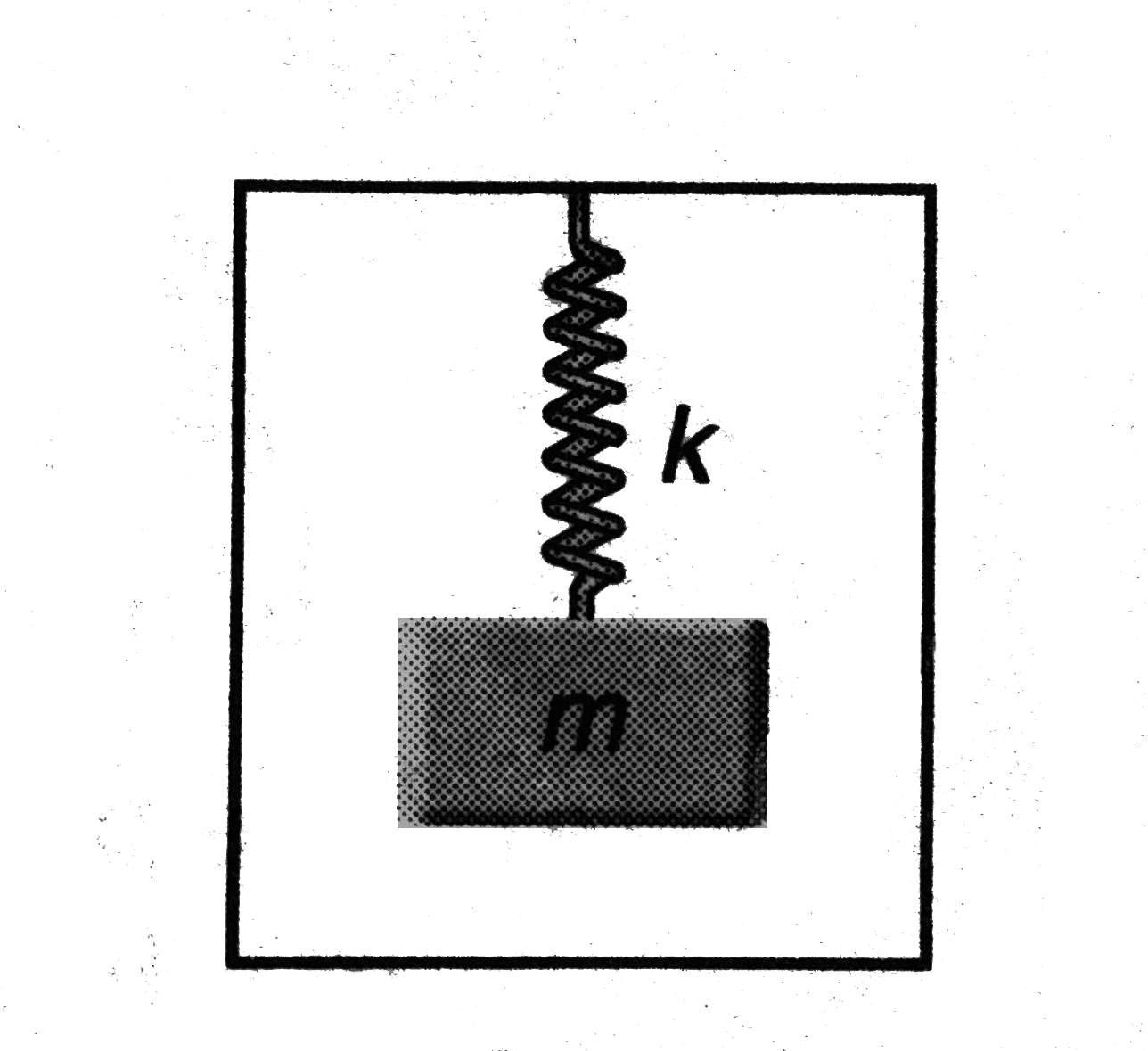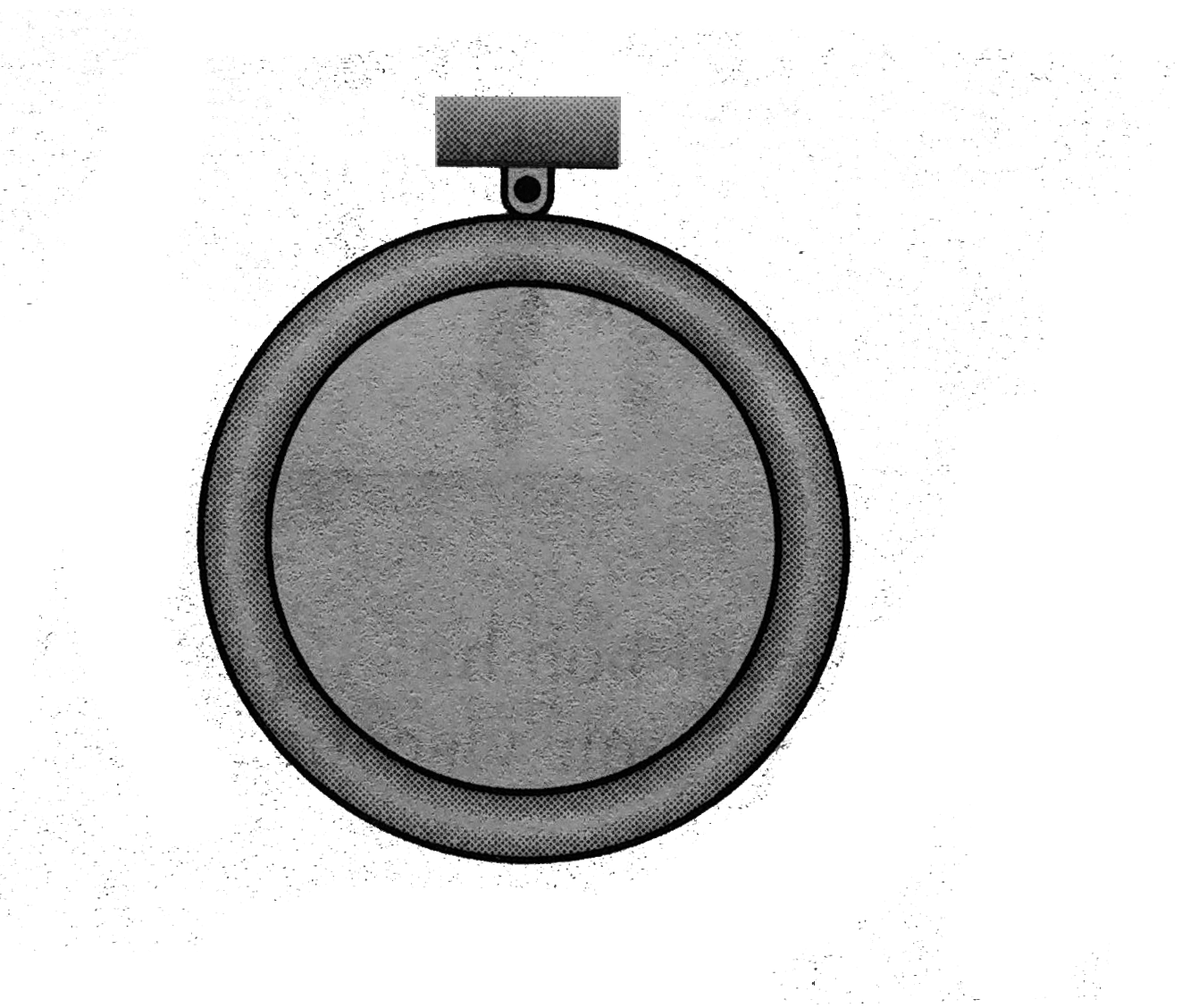Example from DC PANDEY ENGLISH SIMPLE HARMONIC MOTION for Class 11
| Class 11 | PHYSICS |
| Chapter | SIMPLE HARMONIC MOTION |
| DC PANDEY ENGLISH | Example |
| Medium | English |
| Academic Year | 2023-2024 |
Question 14
A particle executes simple harmotic motion about the point x=0. At time t=0, it has displacement x=2cm and zero velocity. If the frequency of motion is 0.25s−1, find (a) the period, (b) angular frequency, ( c) the amplitude, (d) maximum speed, (e) the displacement from the mean position at t=1sand (f) the velocity at t=1s.View SolutionQuestion 15
Two particles move parallel to x - axis about the origin with the same amplitude and frequency. At a certain instant they are found at distance A3 from the origin on opposite sides but their velocities are found to be in the same direction. What is the phase difference between the two ? View SolutionQuestion 16
A particle of mass 2 kg executing SHM has amplitude 10 cm and time period is 1 s.Find (i) the angular frequency (ii) the maximum speed (ii) the maximum acceleration (iv) the maximum restoring force (v) the speed when the displacement from the mean position is 8 cm (vi) the speed after 112 s the particle was at the extreme position (vii) the time taken by the particle to go directly from its mean position to half the amplitude (viii) the time taken by the particle to go directly from its exterme position to half the amplitude.View SolutionQuestion 25
The potential energy of a particle oscillating along x-axis is given as
U=20+(x−2)2
Here, U is in joules and x in meters. Total mechanical energy of the particle is 36J.
(a) State whether the motion of the particle is simple harmonic or not.
(b) Find the mean position.
(c) Find the maximum kinetic energy of the particle. View SolutionQuestion 30
A simple pendulum consists of a small sphere of mass m suspended by a thread of length l. the sphere carries a positive charge q. The pendulum is placed in a uniform electric field of strength E directed vertically upwards. With what period will pendulum oscillate if the electrostatic force acting on the sphere is less than the gravitational force ? View SolutionQuestion 35
Two rigid bodies A and B of masses 1 kg and 2 kg respectively are rigidly connected to a spring of force constant 400 Nm−1 . The body B rests on a horizontal table. From the rest position , the body A is compressed by 2 cm and then released . Deduce (i) teh frequency of oscillation, (ii) total oscillation energy, (iii) the amplitude of the harmonic vibration of the reaction of the table on body B.
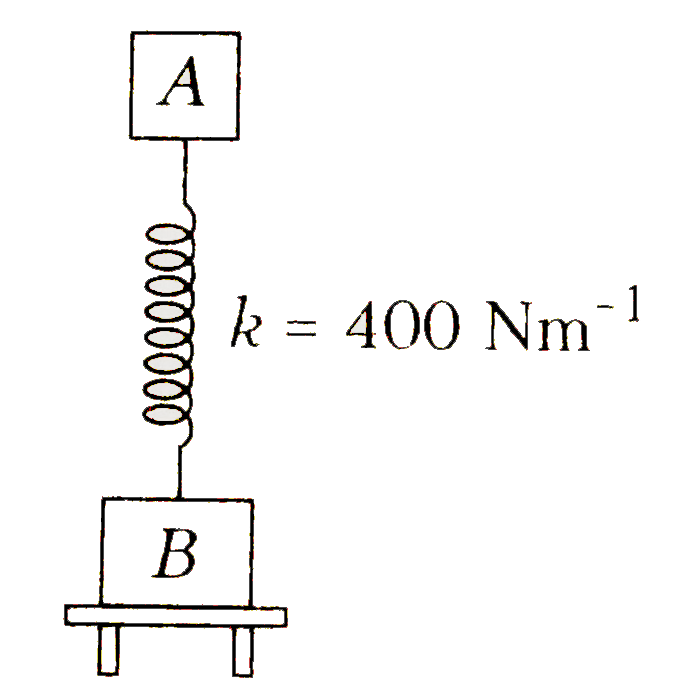 View Solution
View SolutionQuestion 36
A block with mass M attached to a horizontal spring with force constant k is moving with simple harmonic motion having amplitude A1. At the instant when the block passes through its equilibrium position a lump of putty with mass m is dropped vertically on the block from a very small height and sticks to it.
(a) Find the new amplitude and period.
(b) Repeat part (a) for the case in which the putty is dropped on the block when it is at one end of its path.View SolutionQuestion 39
A 2.5 kg collar attached to a spring of foce constant 1000 Nm−1 slides without friction on a horizontal rod. The collar is displaced from its equilibrium position by 5.0 cm and released. Calculate (i) the period of oscillation (ii) the maximum speed of the collar and (iii) the maximum acceleration of the collar.View SolutionQuestion 42
Two identical springs of spring constant k are attached to a block of mass m and to fixed supports as shown in Fig. 14.14. Show that when the mass is displaced from its equilibrium position on either side, it executes a simple harmonic motion. Find the period of oscillations.
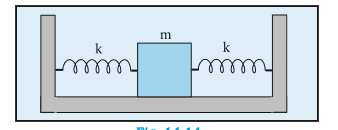 View Solution
View SolutionQuestion 46
An uniform disc is rotating at a constant speed in a vertical plane about a fixed horizontal axis passing through the centre of the disc. A piece of the disc from its rim detaches itself from the disc at the instant when it is at horizontal level with the centre of the disc and moving upwards, then about the fixed axis.
STATEMENT-1 : Angular speed of the disc about the aixs of rotation will increase.
and
STATEMENT-2 : Moment of inertia of the disc is decreased about the axis of rotation.View SolutionQuestion 50
A liquid of mss m is set into oscillations in a U-tube of cross section A. Its time period recorded is T, where T=2π√l/2g , here l is the length of liquid column. If the liquid of same mass is set into oscillations in U-tube of cross-section A/16 then determine time period of oscillation.View Solution
All Exercises from DC PANDEY ENGLISH Class 11 PHYSICS SIMPLE HARMONIC MOTION
- ASSERTION AND REASON
- CHAPTER EXERCISES
- CHECK POINT 11.1
- CHECK POINT 11.2
- CHECK POINT 11.3
- CHECK POINT 11.4
- COMPREHENSION TYPES
- EXERCISE 14.1
- EXERCISE 14.2
- EXERCISE 14.3
- EXERCISE 14.4
- INTEGER TYPE QUESTIONS
- INTRO. EXER.
- JEE ADVANCED
- LEVEL 1 ASSERTION AND REASON
- LEVEL 1 SINGLE CORRECT
- LEVEL 1 SUBJECTIVE
- LEVEL 2 COMPREHENSION
- LEVEL 2 MORE THAN ONE CORRECT
- LEVEL 2 SINGLE CORRECT
- LEVEL 2 SUBJECTIVE
- MATCH THE COLUMNS
- MATRIX MATCHING TYPE QUESTIONS
- MEDICAL ENTRACES GALLERY
- MORE THAN ONE OPTION IS CORRECT
- ONLY ONE QUESTION IS CORRECT
- EXAMPLE
- EXAMPLE TYPE 1
- EXAMPLE TYPE 10
- EXAMPLE TYPE 11
- EXAMPLE TYPE 12
- EXAMPLE TYPE 13
- EXAMPLE TYPE 2
- EXAMPLE TYPE 3
- EXAMPLE TYPE 4
- EXAMPLE TYPE 5
- EXAMPLE TYPE 6
- EXAMPLE TYPE 7
- EXAMPLE TYPE 8
- EXAMPLE TYPE 9
- EXAMPLES
- MISCELLANEOUS EXAMPLES
